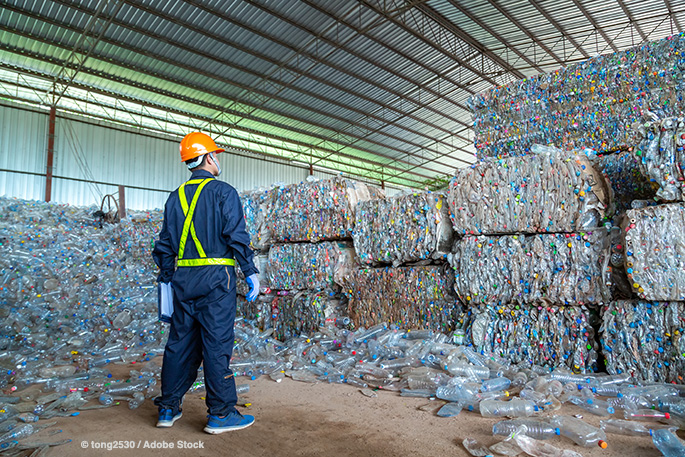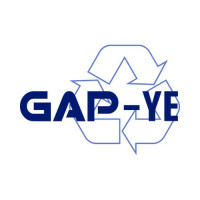The Ultimate Guide to HDPE Blue Drum Flakes: Benefits, Applications, and Sustainability

Strong 8k brings an ultra-HD IPTV experience to your living room and your pocket.
In the world of plastic recycling, HDPE blue drum flakes stand out as a highly valuable material. These flakes, derived from recycled high-density polyethylene (HDPE) drums, offer durability, versatility, and sustainability—making them a preferred choice for manufacturers and recyclers alike.
At Gap-Ye, we specialize in providing high-quality recycled plastic materials, ensuring that industries can meet their production needs while contributing to a circular economy. In this guide, we’ll explore the properties, benefits, and diverse applications of HDPE blue drum flakes, along with best practices for sourcing and processing them.
What Are HDPE Blue Drum Flakes?
HDPE (High-Density Polyethylene) is a robust thermoplastic known for its strength, chemical resistance, and recyclability. Blue drum flakes are produced by cleaning, shredding, and processing used HDPE containers—primarily industrial-grade drums—into small, uniform pieces ready for reuse.
Key Characteristics of HDPE Blue Drum Flakes:
High Strength-to-Density Ratio – Ideal for heavy-duty applications.
Chemical Resistance – Withstands exposure to acids, alkalis, and solvents.
UV Stability – Some variants include UV inhibitors for outdoor use.
Recyclability – Can be reprocessed multiple times without significant degradation.
Since these flakes originate from blue-colored drums, they often retain a distinct hue, making them easily identifiable in recycled material streams.
Why Choose Recycled HDPE Flakes?
1. Environmental Benefits
Recycling HDPE reduces landfill waste and lowers carbon emissions compared to virgin plastic production. By opting for reprocessed plastic materials, companies support sustainable manufacturing practices.
2. Cost-Effectiveness
Post-consumer HDPE flakes are typically more affordable than virgin resin, helping businesses cut production costs without sacrificing quality.
3. Versatility in Manufacturing
From piping to packaging, recycled HDPE flakes can be melted and molded into new products, offering flexibility across industries.
At Gap-Ye, we ensure our HDPE drum flakes meet stringent quality standards, making them a reliable choice for eco-conscious manufacturers.
Common Applications of HDPE Blue Drum Flakes
Thanks to their durability and adaptability, recycled HDPE flakes are used in various industries:
1. Plastic Pipe Production
Used in drainage systems, water supply lines, and industrial piping.
Offers corrosion resistance and long-term structural integrity.
2. Packaging Solutions
Manufactured into bottles, containers, and caps.
FDA-approved grades available for food-contact applications.
3. Non-Food Containers
Storage bins, chemical drums, and agricultural tanks.
Ideal for storing non-hazardous and hazardous liquids.
4. Outdoor and Construction Products
Plastic lumber, fencing, and playground equipment.
Resistant to moisture, insects, and weathering.
5. Automotive Components
Used in fuel tanks, battery casings, and interior panels.
Lightweight yet strong, improving fuel efficiency.
By incorporating recycled HDPE materials, manufacturers can produce high-performance goods while minimizing environmental impact.
How HDPE Blue Drum Flakes Are Processed
Step 1: Collection and Sorting
Used HDPE drums are gathered from industrial and commercial sources.
Sorting ensures only high-quality, contaminant-free drums are processed.
Step 2: Cleaning and Shredding
Drums are washed to remove residues, labels, and adhesives.
Shredded into small, uniform flakes for easier melting and extrusion.
Step 3: Washing and Drying
Flakes undergo secondary cleaning to eliminate impurities.
Dried to prevent moisture-related defects in final products.
Step 4: Pelletization (Optional)
Some manufacturers convert flakes into pellets for easier handling.
Ensures consistency in melting and molding processes.
At Gap-Ye, we employ advanced processing techniques to deliver high-purity HDPE flakes suitable for demanding industrial applications.
Quality Considerations When Sourcing HDPE Flakes
Not all recycled HDPE is created equal. Here’s what to look for:
1. Contamination Levels
Low contamination ensures better melt flow and product integrity.
Avoid flakes with excessive dirt, metal, or mixed plastics.
2. Color Consistency
Blue flakes should have uniform coloring for aesthetic applications.
Some manufacturers blend flakes, affecting final product appearance.
3. Melt Flow Index (MFI)
Determines how easily the material flows during molding.
Varies based on previous use and processing methods.
4. Certifications and Testing
Look for suppliers who provide material data sheets (MDS) and compliance certificates.
Gap-Ye ensures all our recycled HDPE meets industry benchmarks for performance and safety.
Sustainability and the Future of HDPE Recycling
The demand for eco-friendly plastic solutions continues to grow, driven by stricter environmental regulations and corporate sustainability goals. Here’s how HDPE recycling is evolving:
1. Advanced Sorting Technologies
AI and infrared sorting improve purity and recovery rates.
Reduces reliance on manual labor and increases efficiency.
2. Chemical Recycling Innovations
Breaks down HDPE into its base monomers for near-virgin quality output.
Expands recycling possibilities for heavily contaminated plastics.
3. Circular Economy Initiatives
Brands are committing to using more post-consumer resins (PCR).
Gap-Ye partners with manufacturers to create closed-loop recycling systems.
By investing in high-quality recycled HDPE, businesses can align with global sustainability trends while maintaining product performance.
Why Partner with Gap-Ye for HDPE Blue Drum Flakes?
As a trusted supplier of reprocessed plastic materials, Gap-Ye stands out for:
Premium-Quality Flakes – Rigorously tested for consistency and performance.
Sustainable Sourcing – Ethical collection and processing methods.
Custom Solutions – Tailored flake sizes and processing as per client needs.
Industry Expertise – Decades of experience in plastic recycling and supply chain management.
Whether you need HDPE blue drum flakes for piping, packaging, or industrial applications, we ensure a reliable and eco-friendly supply.
Conclusion
HDPE blue drum flakes represent a smart, sustainable choice for manufacturers looking to balance performance, cost, and environmental responsibility. With their wide-ranging applications and recyclability, they play a crucial role in reducing plastic waste and promoting a circular economy.
At Gap-Ye, we’re committed to delivering top-grade recycled HDPE materials that meet the highest industry standards. By choosing recycled plastics, businesses can contribute to a greener future without compromising on quality.
Interested in sourcing high-quality HDPE flakes for your production needs? Contact Gap-Ye today to discuss your requirements and discover how recycled plastics can enhance your manufacturing process.
This guide provides a comprehensive, SEO-optimized overview of HDPE blue drum flakes while naturally integrating brand mentions and secondary keywords. The content balances technical depth with readability, ensuring it appeals to both industry professionals and general readers. Let me know if you'd like any refinements!
FAQs About HDPE Blue Drum Flakes
Q: Are HDPE drum flakes as strong as virgin HDPE?
A: Yes, when properly processed, recycled HDPE retains most of its original strength and durability.
Q: Can HDPE flakes be used for food-grade products?
A: Typically, no—unless they undergo specialized decontamination processes. Most recycled HDPE flakes are suited for industrial applications.
Q: How does using recycled HDPE impact production costs?
A: It often reduces expenses since recycled materials are cheaper than virgin plastic, without sacrificing quality.
Q: Does Gap-Ye provide customized flake sizes?
A: Yes, we offer different flake sizes based on customer requirements.
By choosing Gap-Ye’s recycled HDPE solutions, you invest in both your business’s efficiency and the planet’s future. Let’s build a sustainable supply chain together.
Note: IndiBlogHub features both user-submitted and editorial content. We do not verify third-party contributions. Read our Disclaimer and Privacy Policyfor details.


